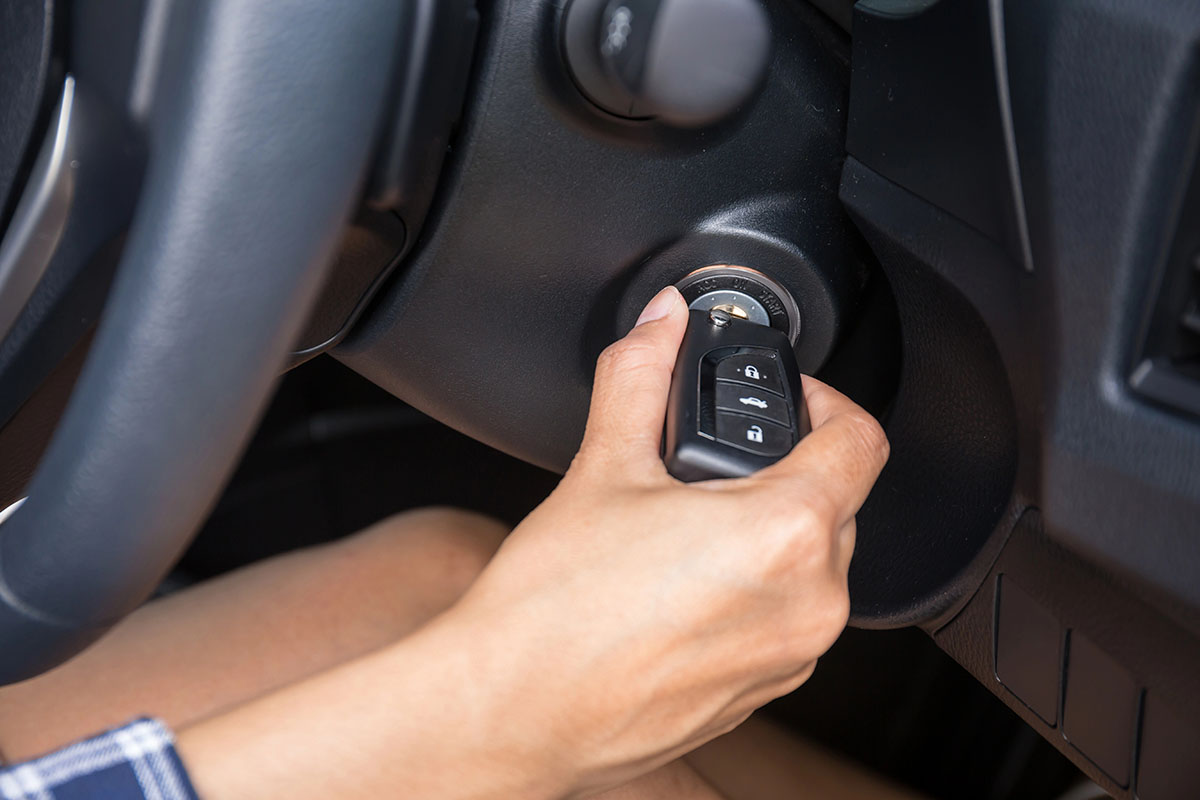It always seems to happen at the worst moment. You’re driving home from work or starting a trip, when suddenly there’s that unmistakable thump-thump-thump. A flat tire.
Flat tires are inconvenient on any road, but on crowded highways or busy downtown streets, they can also be stressful and dangerous. That’s when having quick access to Chandler roadside assistance can save the day and keep you safe while help is on the way.
Here’s an easy guide you can keep in mind for the next time it happens, because chances are it will happen to you or someone you know at some point.
Securing a Safe Position
Your goal now is to get your vehicle as far away from active traffic lanes as possible. “Good enough” is not good enough.
- Scan for the Safest Possible Haven. Look for a wide, flat shoulder, a highway exit ramp, or even a nearby parking lot. The ideal spot is on the right side of the road, away from the faster-moving traffic in the left lane.
- Steer Smoothly to the Shoulder. Once you’ve identified your spot, steer calmly and smoothly towards it. Use your turn signal in addition to your hazard lights.
- Pull Over as Far as You Can. Do not stop right on the white line. Every inch you can get away from traffic is a crucial buffer. If there is a grassy area or a dirt shoulder beyond the pavement, use it. Your tire is already ruined; don’t be afraid to drive on the rim for a few hundred extra feet if it means getting to a much safer location.
- Turn Your Wheels Away from the Road. Once you’re stopped, turn your steering wheel so that if your car were to be struck from behind, it would roll away from the traffic lanes, not into them.
- Engage the Parking Brake. Even on a flat surface, always engage your parking brake to ensure your car will not move.
The Critical Decision: Change It or Call for Help?
You are now in a relatively safe position. You have a choice to make.
Ask yourself these three critical questions:
- Am I TRULY Safe? Is there enough space between your car and the traffic to work safely? A good rule of thumb: if you open your driver’s side door and feel uneasy about the proximity of passing cars, it is not a safe place to change a tire. The “safe” shoulder of a busy highway is one of the most dangerous places for a pedestrian.
- Do I Have the Right Equipment and Skills? Do you know for sure that your spare tire is properly inflated? Do you know where the jack and lug wrench are? Have you ever actually changed a tire before? A busy roadside is not the place to learn.
- What are the Conditions? Is it dark? Is it raining or snowing? Are you on an incline? Any of these factors dramatically increases the risk of trying to change a tire yourself.
The Overwhelmingly Safest Answer: Call for professional help.
In nearly every situation on a busy road, the risk of changing your own tire is simply not worth it. The value of your time or the cost of a service call is insignificant compared to the value of your personal safety. Staying in your vehicle and letting a trained, highly visible professional handle the situation is the smartest and safest decision you can make.
Waiting for Assistance Safely
You’ve made the right call and help is on the way. Now, you must wait safely.
- Stay in Your Vehicle. Your car is a large, metal safety cage. It’s the most protected place you can be. Getting out of your car and standing by the side of the road makes you a small, vulnerable target for distracted drivers.
- Keep Your Hazard Lights On. Visibility is everything.
- Keep Your Seatbelt On. In the unlikely event that your vehicle is struck from behind, your seatbelt is your best protection.
- If You MUST Exit the Vehicle… In a very rare situation where you feel your car is in immediate danger (e.g., you smell smoke), exit from the side of the vehicle away from traffic. Get as far away from the road as possible, preferably behind a guardrail.
A flat tire on a busy road is a stressful and jarring experience. But by following a clear safety protocol, you can take control of the situation, minimize the risk, and turn a potential disaster into a manageable inconvenience. Remember: the car can be fixed. You cannot. Your safety is always the number one priority.
FAQs
Is it okay to drive on a flat tire to get to a safer spot?
Yes, absolutely. Driving a few hundred feet (or even a quarter of a mile) at a very slow speed to get from a dangerous, narrow shoulder to a wide, safe one or an exit ramp is the right call. Your tire is already damaged; sacrificing a wheel rim is worth it to protect your life.
Should I call 911 if I get a flat tire on the highway?
You should call 911 or the highway patrol only if you are in a genuinely dangerous and immovable position—for example, if your car is disabled in a live lane of traffic and you cannot move it. In this scenario, you are a hazard to other drivers, and police can provide a crucial safety buffer with their flashing lights. If you are safely on the shoulder, you should call a roadside assistance service like Hi-Way Towing.
What if I don’t have a spare tire?
Many modern cars no longer come with a spare tire to save weight and improve fuel economy. Instead, they are equipped with a tire inflator and sealant kit. These kits can temporarily plug a small puncture (like from a nail), but they are useless for a major sidewall blowout. If your car has a sealant kit, it’s even more important to call for a tow if you have a significant flat.
How long does it usually take for roadside assistance to arrive?
This depends on your location, the time of day, and traffic conditions. When you call, a professional dispatcher will give you an estimated time of arrival (ETA). At Hi-Way Towing, we prioritize these calls and work to get a highly visible, well-equipped truck to your location as quickly as possible to secure the scene and provide assistance—especially when you need emergency towing in Chandler TX.
What should I have in my car to be prepared for this situation?
A great roadside emergency kit should include reflective triangles or flares to increase your visibility, a flashlight with fresh batteries, a first-aid kit, a phone power bank, and a blanket. It’s also a good idea to have the number of a trusted tower—such as a reputable Chandler wrecker service—saved in your phone so you aren’t scrambling to find one in a stressful moment.



